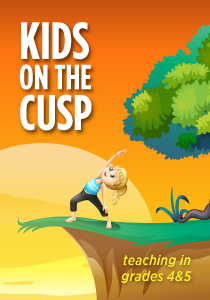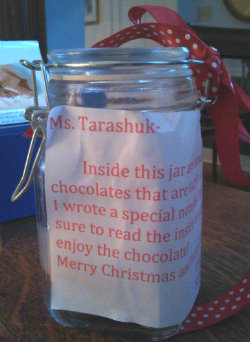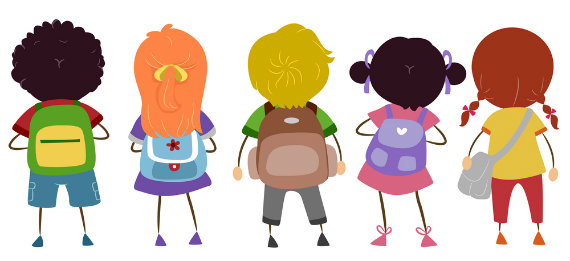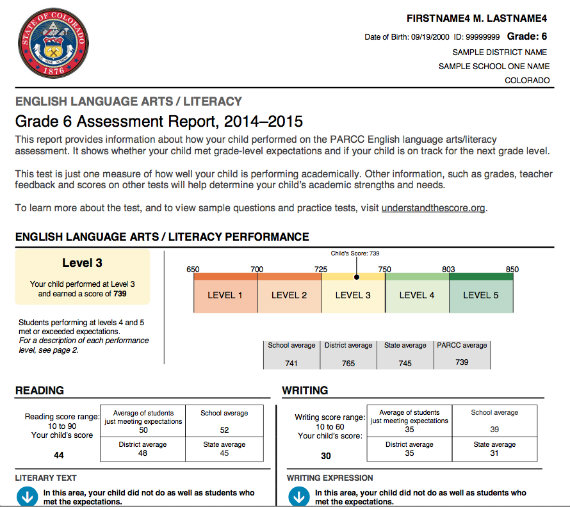Nicknames & Folders Help Me Know My Kids
A MiddleWeb Blog
 My seventh grade daughter walked into the living room the Friday evening that would begin a four-day weekend. She had a jelly jar half filled with Hershey’s miniatures in her hands.
My seventh grade daughter walked into the living room the Friday evening that would begin a four-day weekend. She had a jelly jar half filled with Hershey’s miniatures in her hands.
Each piece of chocolate had been individually wrapped in a small rectangle of construction paper. Each held a hand-written message on it, an individual thought, from Kayleigh, one of my students last year. Each homemade wrapper explained something about what being in Classroom 4T meant to her.
After receiving this jar of sweet inspirations last December, I made a conscious decision to eat them slowly. These were chocolates I wanted to savor. These were messages that would help me when the expectations put on me by Big Education become overwhelming. They were there when I wanted to remember why I teach… when I needed to renew my spirit and repress my desire to run away. And these inspirational messages didn’t have to be duplicated in triplicate or submitted in spreadsheet form.
 Two Fridays ago it was time for another inspiration bomb. My daughter knew exactly what I was unloading from my school bags. She knew the living room floor would soon be covered with Math Assessments, Personal Narratives, Reading folders from third grade, student interest inventories to peruse and ponder, and various and sundry get-to-know-you items. These would be the beginning of the individual student folders I would be putting together over the long weekend.
Two Fridays ago it was time for another inspiration bomb. My daughter knew exactly what I was unloading from my school bags. She knew the living room floor would soon be covered with Math Assessments, Personal Narratives, Reading folders from third grade, student interest inventories to peruse and ponder, and various and sundry get-to-know-you items. These would be the beginning of the individual student folders I would be putting together over the long weekend.
“You haven’t had one of these in a while,” she explained, handing me the jelly jar, its red and white spotted ribbon a little worse for the wear, but still festive.
“You’re right,” I agreed. I took out a miniature and carefully unwrapped the note, popping the chocolate in my mouth. It simply read, “I love the nicknames!”
How 4T nicknames came to be
Kayleigh’s note was referring to the nicknames that seem to evolve each year in 4T. Over the years, they have become a custom. Like any custom, they started out small, with one or two kids in each class, kids with a fun last name to play around with, kids whose first names lent themselves to creativity, kids with certain endearing quirks, kids with first or last names that were really hard to spell!
But the practice of coming up with nicknames for the kids has taken on a life of its own. Our nicknames have become part of how we get to know each other, part of our developing as individuals in a classroom setting, part of what make us a whole, cohesive, malleable unit. The creation of names, like “SkyJ” (and “SkyJr” two years later), “Bruntasaurus,” “Jackal,” “Rocky,” and “Bellisima” are now “the norm” in our classroom.
But a nickname has to fit. It must represent something special about the individual person, the individual learner. A nickname has to have something to do with who we are…or it falls flat.
More clues to my new class
The piles of paperwork on the living room floor would be some of my first clues about my new class. Each piece will help me discover who my students are as individual learners. Get-to-know-you activities and the administering of a variety of student assessments are important first-week activities.
Gathering information about the kids, their interests and temperaments, and their ability levels in reading, writing, spelling, and math are vital in getting us started on the right path. The Buck Institute’s Bob Lenz writes about “A New Era for Student Assessment” here.
What’s missing: PARCC scores (and their meaning!)
The results of the PARCC tests aren’t in yet. Even if the results were available, they wouldn’t help me get to know my kids. I do glance at each child’s scores (when the data actually shows up, which is always well after the beginning of the school year). When results do arrive, these numbers don’t tell me anything useful about my individual learners. Yet, millions of dollars and precious time continue to be spent developing and administering them.
Time and energy is wasted, year after year. Money is wasted. Big Business has taken over, and teachers are being forced to administer standardized tests that are just as helpful as the old standardized tests were…which is to say, not at all.
I was curious to see how the “new results” would be reported. After finding some sample results online, I’m pretty sure this “new” form of student assessment will not be helpful in getting to know my students either.
The documents themselves claim to “Give your child’s teacher information about his/her academic performance,” and they direct parents to “Meet with your child’s teacher to understand what that (score) means.” I’m not sure what help I can be with this directive. The numbers just aren’t meaningful to me.
Whatever the numbers are being used for, it’s not to help teachers help children…at least not from where I am standing, which is, ironically, in a classroom with the kids being summarized on a one-page report.
Sure, there are colorful graphs and arrows to indicate student progress in mathematics and literacy topics, but there is no information that is more useful to me than the papers that were piled on my living room floor a week and a half ago. I collected all of them myself, at no additional cost to the state.
What my student folders look like
These folders contain the following (so far):
A Personal Narrative – After a brief discussion about good story telling, the kids were asked to choose a time in their lives to write about. This low-stress, relaxed writing activity gave me an excellent picture of each writer, his everyday, expressive written language, fine-motor skills, letter formation, flow of ideas, and application of proper sentence mechanics.
Run-on-Sentence/Punctuation Assessment – The ability to revise writing by manipulating incorrect sentence mechanics into organized ideas, and the ability to clearly express ideas in writing, are complex things to assess. They certainly can’t be understood by looking at a standardized test summary report.
 Reading Folders – The kids were last given the Fountas and Pinnell reading assessment last June. I need to meet with each of them for a more recent assessment of their progress. Until that is accomplished, these reading levels (and the notes written in them by our third grade team) will help me form initial reading partnerships.
Reading Folders – The kids were last given the Fountas and Pinnell reading assessment last June. I need to meet with each of them for a more recent assessment of their progress. Until that is accomplished, these reading levels (and the notes written in them by our third grade team) will help me form initial reading partnerships.
A Student Interest Inventory – Given as homework during Week 1, this helped me gain non-academic information, an essential part of understanding the whole child.
An Initial Math Assessment – This assisted in breaking down who can compute and follow formulas, who seems to have a deep understanding of math concepts but skips step when using mathematical algorithms, and who is still lacking in the basics.
The contents of these student files are only the beginning of my research. More will be added as our year progresses. New observations and insights arrive each day with my fourth graders.
For now, chocolate at hand, it’s nice to have a place to start, a four-day weekend to spend outside of the classroom, in quiet contemplation, reviewing and evaluating my students and thinking about the teaching approaches that will best serve them in the new school year.
PARCC-free portraits
The PARCC results are supposed to arrive some time in October. I won’t get the results for each child, as far as I know, so the results won’t be found in my student folders. That’s fine with me. They don’t belong there. I only include items that are valuable to me as a professional educator. The standardized results don’t meet that test, if you’ll pardon the expression.
Big Education doesn’t know a thing about “Bean” or “J-Rod” or “Dibsey.” Big Education can’t assess them with any true accuracy.
It’s too bad I can’t just use the individual student folders I create throughout each year as valuable data for my Student Growth Objective. It’s too bad that nothing from these folders will be used to show how much each child really develops, in place of a Student Growth Percentage (SGP) that doesn’t accurately reflect student progress.
My folders paint a much clearer picture of each child – a first-hand, up-close, accurate peek. I’ve got some really amazing young learners to work with this year. I’m getting to know them through their folders and in our classroom. The nicknames are beginning to fly. So far we have “Knee-High,” “Munzito, (or possibly “Mini-Munz”) and a “Tater-Tot.” It looks like it’s going to be another interesting year.


































